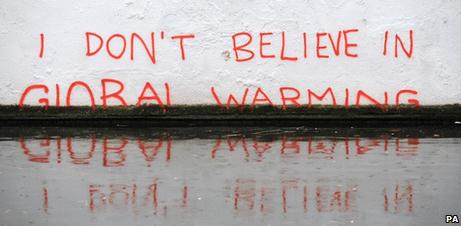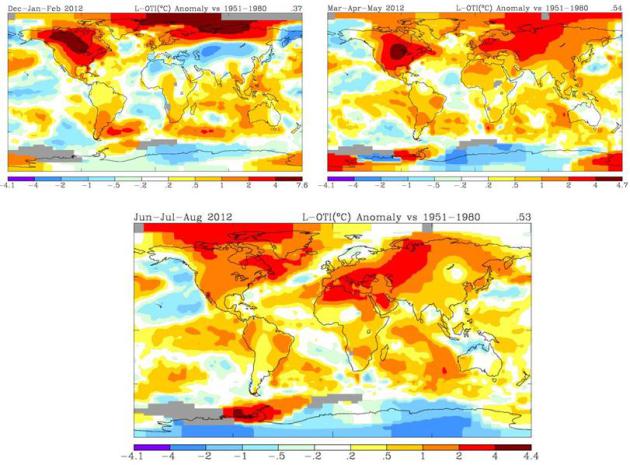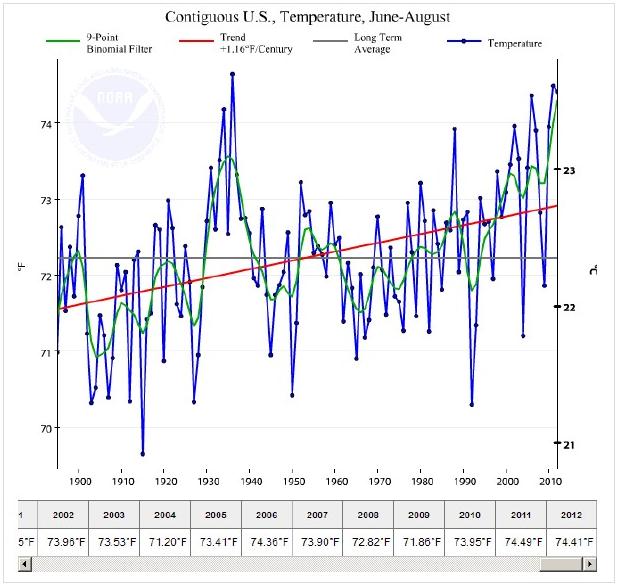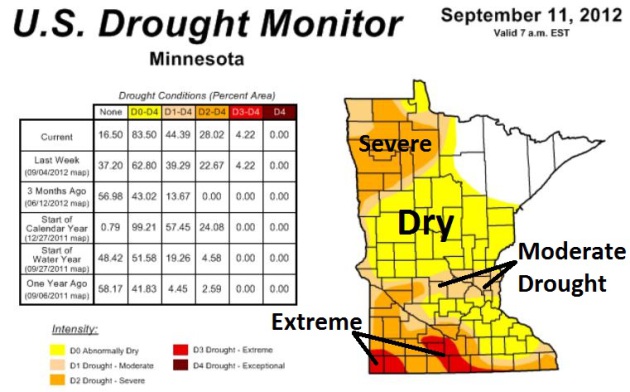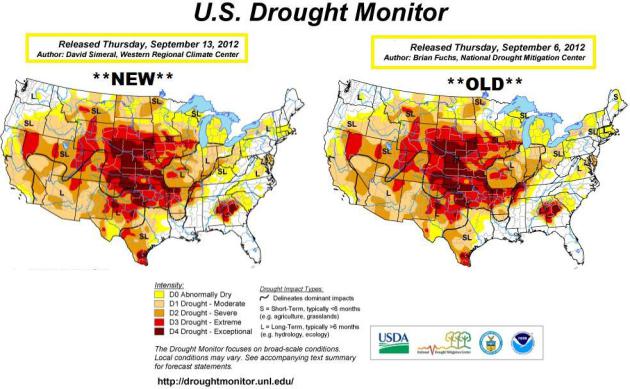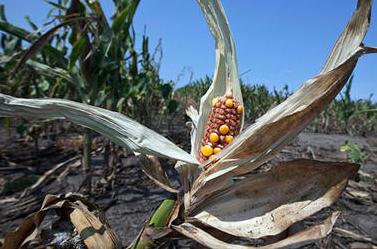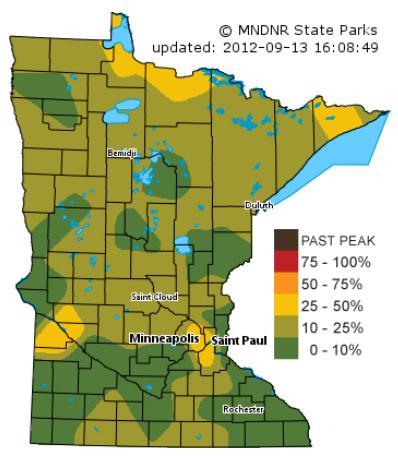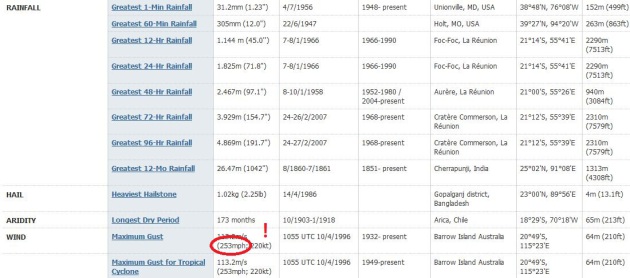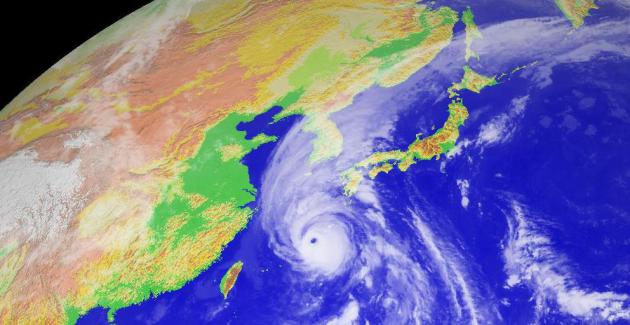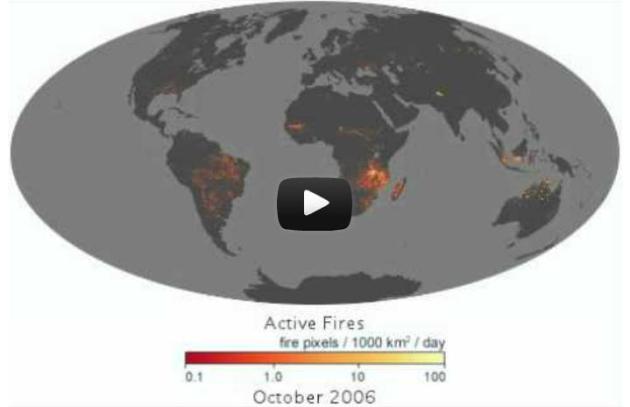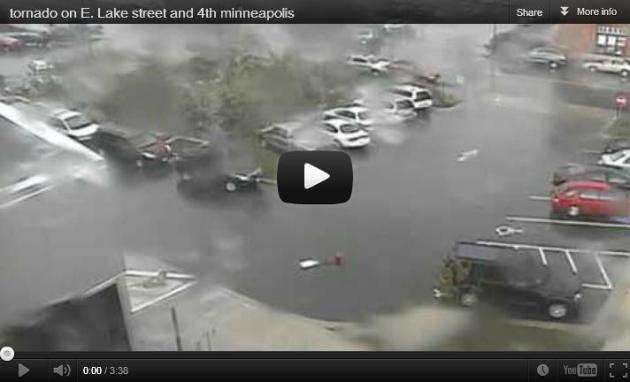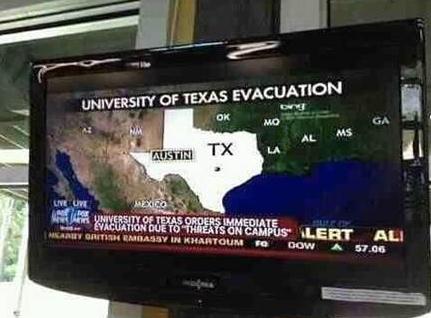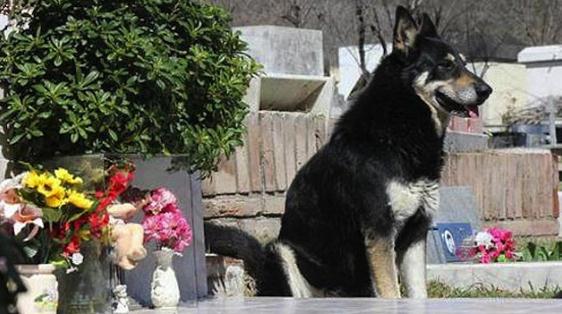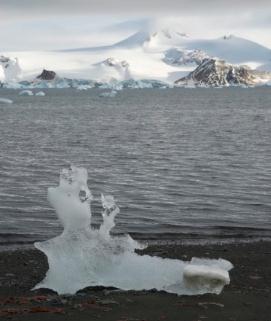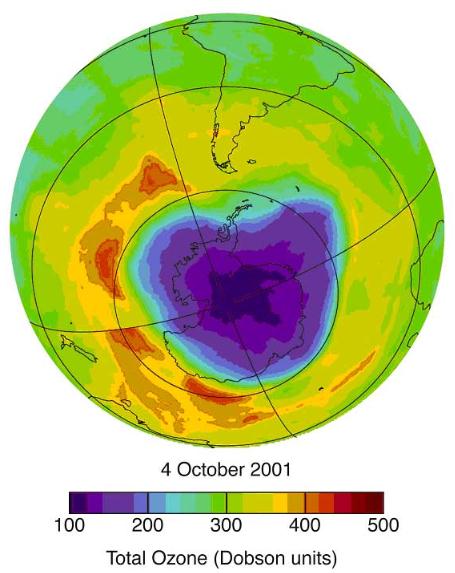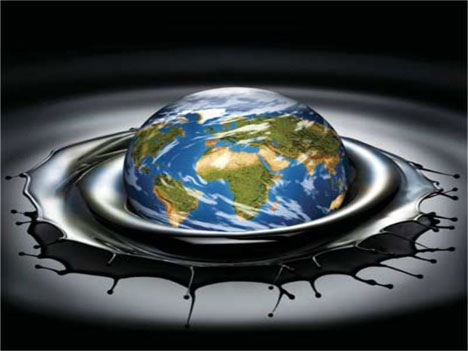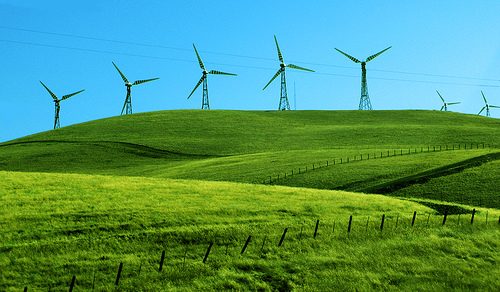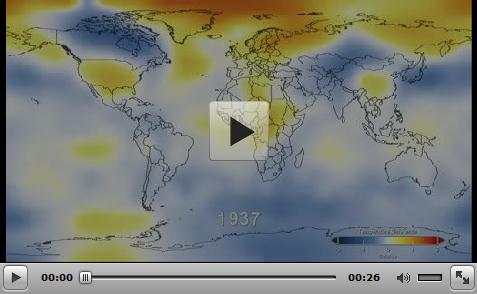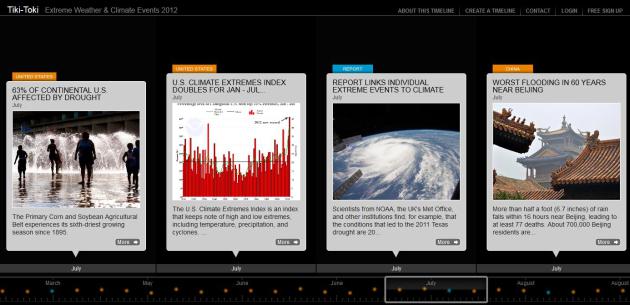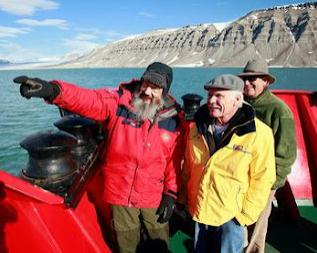"
The first eight months of 2012 have gone into the books as the
warmest January-August period on record for the continental US,
according to the National Oceanic and Atmospheric Administration's National Climatic Data Center in Asheville, N.C.
The 12-month span ending in August 2012 was the warmest 12 months on
record. The summer itself ranks third among the warmest summers on
record." - from a Christian Science Monitor article; details below.
"
Only the USA has been experiencing extreme heat this year - the rest of the planet has been unusually cool." Sorry, that statement doesn't hold up. Check out global 2012 temperature trends from NASA below.
"Some of us are awake. Some of us are asleep. It is that
simple. Those of us trying to educate our fellow citizens about global
climate change are no one special. We are just people who see and
cannot look away. We understand. We know the truth. And we love our
children or feel a moral obligation to others beyond ourselves. We've
studied the science and have grasped the obvious. We cannot rest even
though deep down we fear it might not matter in the end. We have to do
this. We must. We have no choice." - Doug Craig, in a recent article that resonated at "Climate of Change" below.
Canadian Surge. The 84-hour NAM model shows the
first significant shot of the winter season pushing a band of showers
and T-storms across the Upper Midwest Monday - reaching New England and
much of the east coast by Tuesday. Patchy frost is possible by midweek
across the Great Lakes. An even colder shot arrives by the end of the
week. Model data: NOAA.
News of a "Temperature Correction" on the way:
Frosty Possibilities. It seems hard to comprehend,
with temperatures forecast to top 80 again today, but there is a very
good chance of a frost for much of the metro by early next week, coming
roughly 1-2 weeks ahead of schedule. Here's more information from
Planalytics:
"
Starting on Tuesday, consumers east of the Rockies will be
reaching for a fleece jacket during the day and an extra blanket
overnight. While some areas enjoyed cooler overnight conditions this
week, next Tuesday and Wednesday (September 18th & 19th) is expected
to bring a 25 to 30°F decrease for both day time and overnight
temperatures compared to recent weeks across the Northern Plains and
Western Great Lakes. Frost is likely across these regions, including
the major population areas of Minneapolis, Green Bay, Madison, and
Milwaukee."
2012: Global Warming. I run into a fair number of people who tell me "
Paul, yes, the USA had a very hot summer. So what? The rest of the world has been unusually chilly so it all cancels out." Really? The global data set doesn't support that statement.
NASA data
(above) shows global temperatures anomalies since December, 2011. The
upper left graphic shows December - February temperature trends, showing
intense warming over North America and far northern latitudes, but a
cool bias for portions of Asia. Spring anomalies (upper right) show a
fairly uniform warming over most of the planet, the same with summer
anomalies (bottom map) - average summer temperatures 3-5 F. warmer than
the long-term average for Canada, North Africa and a big chunk of Asia.
The data is the data, and the maps above reflect trends seen not just
since December of 2011, but since the mid-80s.
Summer Of 2012: Just Hot Or Did We Do It? WJLA-TV
meteorologist Bob Ryan does a good job of sorting out the (global)
trends from land-use issues and "normal" variations in temperature in
this
important post; here's an excerpt: "...
The
long term trend is clear, but the year to year variability is also
clear. I deal with probabilities so I'll go out on a limb and say I
think it is unlikely next summer in Washington will be our 4th really
hot summer in a row. Then to answer the question in my title. Did "we"
make the past summer as hot as it was? I think the answer is no . . .
but we sure helped make it hotter than average and our footprints of a
warmer world, probably a warmer DC area in the coming decades are
clearer and clearer all the time. Some of my colleagues don't agree. I
look forward to their blogs on climate and if there is a human
"footprint" on our environment, climate and weather patterns."
Hottest Spot on Earth? USA, Not Libya. Here's an excerpt of a post from the
WMO, the World Meteorological Organization: "
A
World Meteorological Organization panel has concluded that the
all-time heat record held for exactly 90 years by El Azizia in Libya is
invalid because of an error in recording the temperature. The
announcement follows a danger-fraught investigation during the 2011
Libyan revolution. Death Valley National Park in California, USA, now
officially holds the title of the world's hottest place - as symbolic
for meteorologists as Mt. Everest is for geographers....Consequently,
the WMO assessment is that the official highest recorded surface
temperature of 56.7°C (134°F) was measured on 10 July 1913 at
Greenland Ranch (Death Valley), California, USA. Full details of the
assessment are given in the on-line issue of the Bulletin of the
American Meteorological Society (http://dx.doi.org/10.1175/BAMS-D-12-00093.1)"
Bird Migration Forecasts Early Winter. Maybe the birds know something we don't...? Here's an excerpt from
sfgate.com: "
There’s
a saying, “Birds never lie.” If so, the best weather forecaster in the
West, the migratory sandhill crane, is predicting an early winter with
plenty of rain and snow. Over the years, the timing of the migration of
sandhill cranes south to the San Joaquin Valley has predicted winter
weather, both wet and dry. Early migrations have meant big winters.
Late migrations, the opposite. “I think 2012 sets a record for earliest
arrival,” said Gary Ivey, the International Crane Foundation’s Western
Conversation Manager. This fall’s verified migration started August 25
when 10 sandhill cranes were sighted in northern San Joaquin County by a
birdwatching group guided by Esther Milnes-Schmierer, a docent for the
Department of Fish and Game. In past years, the giant sandhill cranes
have first arrived in mid-September."
September Crop Update. Dr. Mark Seeley includes an interesting update on crop conditions in this week's
Minnesota WeatherTalk: "
A
national drought perspective was provided this week by Brad Rippey of
the USDA World Agricultural Outlook Board, highlighting the major
features of the USA drought. Excerpts include:
Crops and cattle in drought have begun to rise again. Overall, drought has shifted toward the north and west in recent weeks.
- U.S. corn in drought stands at 84%, up a percentage point from a week
ago. The corn harvest is underway, 15% complete nationally by
September 9.
- Soybeans in drought also rose a point – to 81%. The soybean harvest
is underway in a few areas, 4% complete nationally by September 9.
- Hay in drought rose 3 points to 66%, tying the high set on July 17 and 24.
- Cattle in drought reached a new high, rising 2 points to 74%.
- Winter wheat in drought is added this week, as planting is underway
(4% complete). Nearly three-quarters (74%) of the winter wheat area is
in drought.
- Due to expansion of drought in the nation’s mid-section, contiguous
U.S. drought coverage reached a record-high 64.16% on September 11.
The former record of 63.86% had been set on July 24."
Spreading Drought. According to NOAA's
Drought Monitor,
St. Cloud, Willmar and the entire north metro is in a moderate drought
(again). In fact 44.39% of Minnesota is in a moderate drought, up from
39% last week. Severe drought is impacting the Red River Valley, pockets
of extreme drought from Pipestone to Jackson and Worthington.
Drought of 2012: Status Quo. Not much change in the
U.S. Drought Monitor
- the driest conditions from the Midwest into the Central and Southern
Plains, a pocket of extreme/exceptional drought over eastern Alabama
and Georgia.
Blocking Patterns: How Global Warming May Have Worsened U.S. Drought.
Extreme warming over the Arctic is affecting the jet stream patterns,
with a greater tendency toward "blocks", holding patterns aloft that can
make heat, drought (and flooding) worse.
The Christian Science Monitor explains; here's an excerpt: "
As the summer of 2012 winds down, with drought and searing temperatures its hallmark for much of the continental United States,
researchers are trying to get a better handle on the factors that
contribute to the persistence of weather patterns responsible for the
extremes. The immediate culprit: patterns of atmospheric flow that
steer storms along a given path for weeks, heating and depriving some
areas of needed rain while drenching others. Such blocking patterns are
a global phenomena, a normal component of Earth's weather systems. But
some researchers suggest that global warming's influence on the Arctic
and on the tropics can change circulation patterns in ways that keep
blocking patterns in place longer than they otherwise might."
Photo credit above: "
Drought-damaged corn is seen in a field near Nickerson, Neb., on Aug. 16." Nati Harnik/AP/File
Fall Color Slightly Ahead of Schedule? According to the
Minnesota DNR
25-50% of trees in Hennepin, Ramsey and Dakota county are already
ripening up, about 7-10 days ahead of schedule. Dry weather may be
accelerating color, as trees across much of the metro are under stress.
World Weather - Climate Extremes Archive. Here's a
great bit of trivia for your next party. "Did you know the world record
for rainfall in a 60 minute period is 12" at Holt, Missouri?" Crickets.
O.K. Maybe you don't want to publicize this (geeky) information, but
other weather enthusiasts may find this interesting.
Arizona State University has an interactive global map that shows world records.
Speaking Of Super-Typhoons. I didn't realize this,
but the world record for surface wind gusts is 253 mph, set in 1996 at
Barrow Island, Australia. Seems like that should have been a "Category
6". Source:
Arizona State University and WMO.
Typhoon "Sanba" Expected To hit Okinawa, South Korea.
Huffington Post has details on one of the most powerful typhoons witnessed in the western Pacific in recent years: "
On Friday, Sanba was a super typhoon with winds up to 155 mph. Sanba's cone of landfall has cut a path through Japan's Okinawa and the Asian mainland, NPR reports. The outlet cited military personnel website Stars and Stripes' Dave Ornaeur, who said:
"The bad news: I have never, in all my years of
following tropical cyclones, seen a storm this intense here in the
Pacific. Super Typhoon Sanba is peaking in intensity at 155 knots, or
178.25 mph, today along with gusts near 220 mph (!!!) – a Category
5-equivalent typhoon on the Saffir-Simpson Scale – and will remain
close to that for next day or so."
High-resolution satellite image above courtesy of
Digital-Typhoon.
Sanba's Projected Track. Okinawa
may see a direct strike, the soggy remnants of "Sanba" forecast to swirl
north toward South Korea, possibly reaching Seoul as a Category 1-2
strength hurricane. Track information courtesy of the Japan Meteorological Agency.
Getting The Drop On Storms. Hurricane Hunter
aircraft drop highly-sensitive weather instruments into hurricanes;
these "dropsondes" send back a real-time stream of information that
bolsters the high-resolution computer models hurricane forecasters rely
on to get a handle on these massive, Texas-size storms. Here's a great
explanation of how these instruments work in a post at
NCAR's AtmosNews: "
Whenever
NOAA’s National Hurricane Center (NHC) warns millions of coastal
residents about a potential storm, one of the tools backing up the
decision is a small and highly sophisticated instrument package
developed at NCAR. Dozens of these packages, known as dropsondes, are
released at high altitudes by “hurricane hunter” aircraft to transmit
data on temperature, pressure, humidity, and wind while descending by
parachute through tropical storms and hurricanes. Equipped with GPS
technology to pinpoint atmospheric conditions by location, the
dropsondes have led to an average 10–20% improvement in track forecasts
for the critical 48-hour window in which hurricane watches and
warnings are issued, according to the NHC. Those warnings are estimated
to save an average of about 200 lives yearly."
The Evolution Of Wildfires Around The World. Here's a link to an amazing animation, courtesy of The New York Time's Andy Revkin and
The Washington Post: "
Andrew Revkin of Dot Earth passes along
this fascinating video from the NASA Earth Observatory showing the
“global pulse of fire” around the world since 2000. NASA offers this bit
of commentary: The fire maps show the locations of actively burning
fires around the world on a monthly basis, based on observations from
the Moderate Resolution Imaging Spectroradiometer (MODIS) on NASA’s
Terra satellite. The colors are based on a count of the number (not
size) of fires observed within a 1,000-square-kilometer area. White
pixels show the high end of the count —as many as 100 fires in a
1,000-square-kilometer area per day. Yellow pixels show as many as 10
fires, orange shows as many as 5 fires, and red areas as few as 1 fire
per day."
Top 10 Tornadoes Caught On Surveillance Camera. This
is interesting - now that we have so many webcams recording video
around the USA, every now and then they catch the arrival of a
full-blown tornado. Some incredible footage in this post from
ustornadoes.com: "
I
chose these videos — what I consider to be the top 10 tornadoes caught
on security cam — to show the versatility of surveillance solutions.
Granted, the cameras that caught the tornadoes presented here had a
different goal when initially installed. But as you can see below, these
cameras can often go beyond their intended purpose. And sometimes,
with a little luck, you can get a glimpse at something that otherwise
might have gone unseen."
"After You". I mean, what were these guys thinking?
iPhone 5: Everything You Need To Know. Did you hear, Apple just came out with a new smartphone?
Gizmodo.com does a nice job of summarizing the iPhone 5; here's an excerpt: "
The
new iPhone 5 is here. It's thinner and faster than ever, with a new
form factor that uses a gorgeous panoramic screen with more resolutions
and less consumption. It also surfs the web much faster, thanks to its
new LTE capabilities. And, just as we knew, it has a new smaller dock
connector called Lightning. Overall, it seems they have incrementally
improved every single aspect of the iPhone. It's not a revolutionary
phone, but it is a very nice release."
"Fair, Balanced, And Not Especially Good at Geography."
Hey, cut us a break, it was spot news and there was a new guy on Chyron
who got a little confused. It's those crazy southern states anyway. Who
cares where Missouri, Alabama and Mississippi are on a silly map
anyway. We got Texas right!
Dog Stands Guard Over Deceased Owner's Grave For Six Years. A remarkable (and amazingly sad) story from
Yahoo News; here's an excerpt: "
An extremely dedicated dog has continued to show its loyalty, keeping watch on its owner's grave
six years after he passed away. Capitan, a German shepherd, reportedly
ran away from home after its owner, Miguel Guzman, died in 2006. A
week later, the Guzman family found the dog sitting by his grave in
central Argentina. Miguel Guzman adopted Capitan in 2005 as a gift for
his teenage son, Damian. And for the past six years, Capitan has
continued to stand guard at Miguel's grave. The family says the dog
rarely leaves the site."
On This Date in Weather History (courtesy of the
Twin Cities National Weather Service):
2006: A rapidly forming tornado hits Rogers just before 10pm, killing a 10 year old girl.
1992: New Market received nearly a foot of rain. A bridge collapsed from floodwater in northern Le Sueur County.
1955: An F1 tornado touched down in Mille Lacs and Kanabec Counties causing 1 fatality and $500,000 in damages.
Risk of a Correction
What will I remember about this summer? The
persistence of the heat: Phoenix sizzle meets New Orleans humidity: 31
days of sauna-like 90s and jumbo electric bills to stay cool. 3rd
hottest summer, no tornadoes in the metro area (all those local TV
station Dopplers collecting dust!), and a spastic precipitation pattern.
Parts of Duluth wash away, while drought plagues southern counties. All
or nothing.
Check the NASA GISS data above and you'll see
the warming since last December has been global - not just over the USA,
according to NASA.
In spite of the trends we will have winter again
this year. Steer clear of anyone who tries to tell you exactly what
will happen in the coming months, but the first cold smack of winter is
imminent.
Soak up 80F today; Monday showers mark the
arrival of cold front number 1. Light jackets Tuesday give way to heavy
jackets Friday; highs stuck in the 40s and 50s. It's hard to imagine
today, but flurries may brush far northern Minnesota by late week. First
frost in the MSP metro? Probably 6-8 days away, coming roughly 1-2
weeks earlier than usual.
Well, spring came early this year, right? So did super-sized summer heat.
Mother Nature is just being consistent.
Climate Stories...
Global Warming: How Fast Will The Ice Melt? Here's a clip from a recent story at
The Summit County Citizens Voice: "
It’s
pretty clear that glaciers and ice fields have been melting the past
few decades under relentless global warming. But scientists aren’t sure
exactly how fast the melting will proceed, whether it will speed up,
or perhaps stabilize at some point. A new study looking back at historic
changes in response to climate variations may help answer some of
those questions. The research shows that glaciers on Canada’s Baffin
Island expanded rapidly during a brief cold snap about 8,200 years ago,
suggesting that changes can be sudden and drastic."
Photo credit above: "Research finds that ice sheets can be very sensitive to short-term temperature variations." Photo by Bob Berwyn.
In the Future Living In U.S. Will Be More Neighborly. I hope this extended outlook proves prescient; details from
The Detroit Free Press; here's an excerpt: "
In
the next American metropolis, people will live in smaller homes, relax
in smaller yards, park their smaller cars in smaller spots. They will
be closer to work, to play and, above all, to one another. Global
warming will be a fait accompli in 30 years, and so these urban
Americans will raise their own food, in fields and on rooftops, and
build structures to withstand everything from hurricane winds to
Formosan termites. They will walk and ride more and drive less. And they
will like it. This is the future envisioned by Andres Duany, architect,
town planner, teacher and polemicist. And the future, he will tell
you, is his business."
Saving The Ozone Layer: Lessons For Fighting Climate Change. Here's an excerpt of an article from NRDC and
Huffington Post: "....
Now
that CFCs have been eliminated through the Montreal Protocol, the
ozone layer has started to repair itself and to restore its capacity to
shield us from disease. Just phasing out the U.S. portion of CFCs will prevent nearly 300 million cases
of non-melanoma skin cancer in America and many more worldwide by the
year 2165. The effort to restore the ozone layer is a resounding public
health and environmental success -- one in which I am proud to say NRDC
played a central role. It is a testament to the human community's
ability to solve global problems. And it is proof we can do it faster
and cheaper than originally thought. Now it is time to apply the
lessons learned in the ozone achievement to the fight against another
planetary crisis: climate change."
Image above: NASA.
.
Fossil Fuel Industry Ads Dominate TV Campaign. Have
you noticed any commercials for "clean coal" in recent weeks? Me too.
Details on the geyser of fossil-fuel money involved in this year's
presidential campaign from
The New York Times; here's an excerpt: "
When Barack Obama first ran for president, being green was so popular that oil
companies like Chevron were boasting about their commitment to
renewable energy, and his Republican opponent, John McCain, supported
action on global warming. As Mr. Obama seeks re-election, that world is a distant memory. Some of the mightiest players in the oil, gas and coal
industries are financing an aggressive effort to defeat him, or at
least press him to adopt policies that are friendlier to fossil fuels.
And the president’s former allies in promoting wind and solar power and caps on greenhouse gases? They are disenchanted and sitting on their wallets."
Forecast The Core Facts On Climate Change. Doug Craig has had enough, and he's not mincing words in his latest "
Climate of Change" post
at redding.com. I'm not sure name-calling is the answer, although I'm
amused when people call me a "warmist" or "alarmist". The trends are in
fact, alarming. Just calling it like it is. Here's an excerpt from the
post: "
Calling the deniers by the name deniers is too kind. A
better name would be saboteurs. A saboteur is someone who engages in
sabotage. "Sabotage is a deliberate action aimed at weakening another entity through subversion, obstruction, disruption, or destruction."
The saboteurs have one aim. Delay. They pretend to participate in
this process in good faith but they cannot be trusted. Nothing they say
can be believed. They offer us nothing. They come in the name of
science but they deliberately deceive. They are the enemies of the
Earth, our children, their own children, future generations, the poor
and non-human life. They are essentially a destructive or negative force
in the world. Some of them do this consciously. They know the truth
and deliberately choose to lie. Others are simply misinformed, easily
misled or closed to new information that conflicts with their core
beliefs and values...."
House Republicans Scrub Climate Change Concerns From EPA Bill. Remarkable. Let's just ignore the elephant in the living room. Details from
The Hill: "
The
latest House bill aimed at thwarting climate change regulations drops
previous language that acknowledged scientific concerns about global
warming and evidence of rising temperatures and sea levels. The House is
slated to vote next week on several bills aimed at battling what
Republicans call a White House “war” on coal — a package
that includes previously passed legislation to block greenhouse gas
rules from the Environmental Protection Agency (EPA). But the new
version of the greenhouse gas bill from House Energy and Commerce
Committee Chairman Fred Upton (R-Mich.) omits a “sense of Congress”
section that describes scientific concerns about climate change while
casting it as an international issue."
Climate Chronicles: Climate Change Becomes A Business Reality. The story from
Bloomberg Businessweek; here's an excerpt : "
This
is the year climate change should have hit home. The first eight
months are the hottest on record in the U.S., and Arctic sea ice is
about to hit a record low. Extreme weather, as we’ve come to call it,
has affected everything from the juiciness of the steak at Peter Luger
(high corn prices mean steer are being killed before there’s sufficient fat in the marbled meat) to crime rates, as some blame the recent heist
of $30 million of maple syrup in Quebec to a one-third drop in U.S.
production. No wonder the Carbon Disclosure Project has seen a sharp
spike in the number of large companies that view global warming as an
immediate threat to their operations. The percentage that see danger
right now has jumped to 37 percent of respondents in this year’s CDP
Global 500 Climate Change Report, released on Sept. 12, up from 10
percent just two years ago."
Photo credit: Charlie Riedel/AP Photo. "
Time exposure of smokestacks at the La Cygne Generating Station coal-fired power plant in Kansas."
NRDC Report: Typical Wind Farm Supports Nearly 1,100 Jobs, Adds Millions Of Dollars To Local Economies. Here's an excerpt from a recent press release from the
Natural Resources Defense Council: "
Each
major wind farm in America creates nearly 1,100 jobs and can add tens
of millions of dollars in new taxes and other benefits to the
communities where they’re located, according to two new reports from the
Natural Resources Defense Council. A new 250-megawatt wind farm will
create 1,079 jobs throughout the many steps of building that wind farm,
according to the NRDC report “American Wind Farms: Breaking Down the
Benefits from Planning to Production.” These are positions in
manufacturing, construction engineering and management, among other
areas. But the benefits don’t end there, a separate NRDC study on the
secondary impacts of the wind energy industry shows."
Climate Change Will Extend Hay Fever Season By Six Weeks.
Oh that's just great. I'm liking the milder trends to some extent, but 6
more weeks of sneezing, wheezing and sniffling? Details from The
Guardian and
Mother Jones: "
Hay
fever sufferers face longer pollen seasons and highly allergenic new
strains from invasive plants, a new report on the health effects of
climate change on the UK warned on Tuesday. Global warming will cause
earlier flowering, possibly extending the hay fever season by six
weeks, and enable new species to grow in the UK. Pollen is also
getting more potent, packing more allergen into each grain. The report,
from the Health Protection Agency
(HPA), analyses a wide range of risks including killer heatwaves,
increased flooding, greater food poisoning and new infectious diseases
carried by mosquitoes."
Hot Graphics - Global Warming In Images. Here's a
snippet of a post that summarizes the global trends we're witnessing in
recent decades with excellent visuals and animations; from
getenergysmartnow.org: "..
This NASA graphic impressively provides 131 years of temperature data in 26 seconds. "The
global average surface temperature in 2011 was the ninth warmest since
1880, according to NASA scientists. The finding continues a trend in
which nine of the 10 warmest years in the modern meteorological record
have occurred since the year 2000. … The comparison shows
how Earth continues to experience warmer temperatures than several
decades ago. The average temperature around the globe in 2011 was 0.92
degrees F (0.51 C) warmer than the mid-20th century baseline."
Extreme Weather & Climate Events: 2012.
Here is a remarkable timeline summary of 2012: the warmest, and
probably the most severe year in U.S. history, but an unusual number of
extremes were witnessed worldwide. Check it out for yourself at
tiki-toki.com.
Heat: A Bridge To Climate Consensus? Huffington Post has the story; here's an excerpt: "
Excessive heat is becoming a public health threat, especially in cities. It leads to heat stroke, heat exhaustion, and is a catalyst for ground-level ozone creation as well as asthma and lung disease.
However, and perhaps even more importantly, heat may be the bridge to
climate consensus. While extreme heat is not climate change in itself,
it amplifies the heat impacts of climate change
-- thus also amplifying the threats to human health. It therefore
provides an opportunity that allows climate believers, agnostics, and
deniers to work together to address a common threat to our society.
Regardless of the motivations, dealing with extreme heat can help
mitigate climate change, providing added benefits to society."
Arctic Warning: As The System Changes, We Must Adjust Our Science. Here's an excerpt from
Climate Code Red: "
The Arctic sea-ice big melt of 2012 “has taken us by surprise and we must adjust our understanding of the system and we must adjust our science
and we must adjust our feelings for the nature around us”, according
to Kim Holmen, Norwegian Polar Institute (NPI) international director.
From Svalbard (halfway between mainland Norway and Greenland), the BBC’s
David Shukman reported
on 7 September that Holmen had described the current melt rate “a
greater change than we could even imagine 20 years ago, even 10 years
ago”.
Photo credit above: "
Northern Polar Institute Research
Director Kim Holmen, left, with UN Foundation Board Chairman Ted Turner
and President Timothy Wirth in the Arctic."
Faking That NASA Faked The Moon Landing. More on conspiracy theories and a possible link to ongoing climate change denial from
shapingtomorrowsworld.org: "
Data
integrity is a central issue in all research, and internet-based data
collection poses a unique set of challenges. Much attention has been
devoted to that issue and procedures have been developed to safeguard
against abuse. There have been numerous demonstrations that internet
platforms offers a reliable and replicable means of data collection,
and the practice is now widely accepted. Nonetheless, each data set must
be examined for outliers and “unusual” responses, and our recent paper
on conspiracist ideation and the motivated rejection of science is no
exception. Perhaps unsurprisingly, after various unfounded accusations
against us have collapsed into smithereens,
critics of our work have now set their sights on the data. It has been
alleged that the responses to our survey were somehow “scammed,”
thereby compromising our conclusions."
Permafrost Thaw Will Speed Up Global Warming, Study Says.
CBC News has the story; here's an excerpt: "
Permafrost
soils in Canada's Arctic are melting at a rate that will significantly
speed up global warming, according to new research from the University
of Victoria. The study, published this week in Nature Geoscience,
predicts that the thawing permafrost will release between 68 billion
and 508 billion tonnes of carbon into the atmosphere by the year 2100.
As a result of those carbon emissions, researchers say the Earth's
temperature will rise by more than 0.5 C by the end of the century." Image above: NASA.


